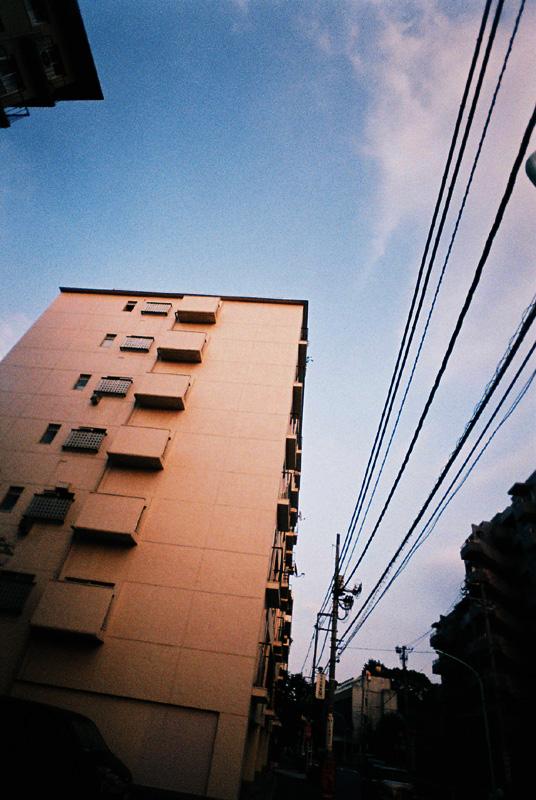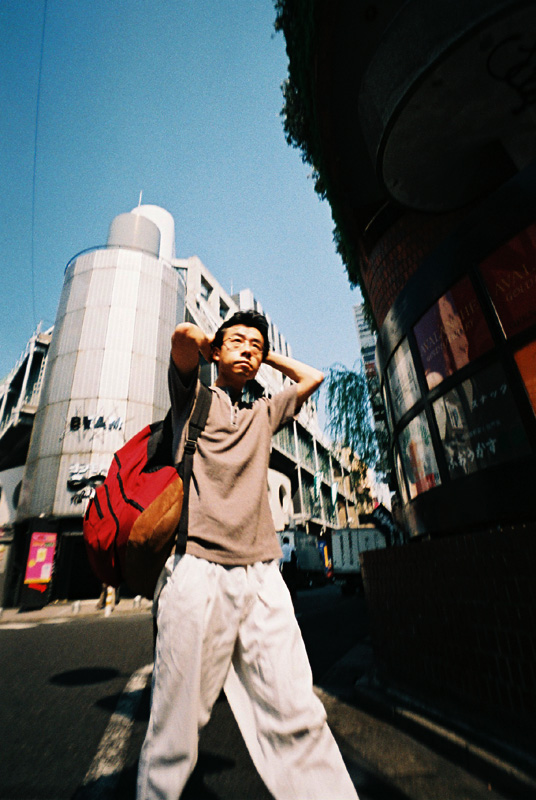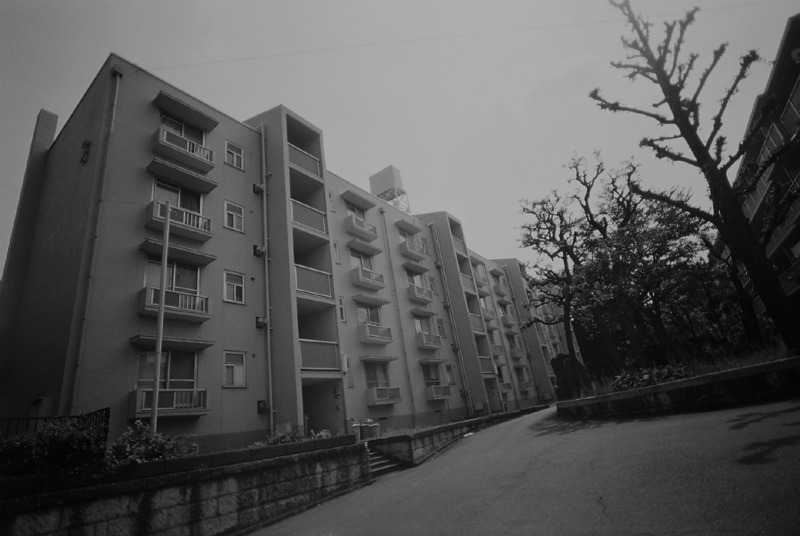Apart from price, there are not too many things a disposable camera can say it does better than a conventional camera?
o Interchangeable lenses - nope.
o Manual control - never.
o Waterproof - sometimes.
o Faster than
f11 - ha!
o Motor-wind - nope.
o Telephoto - no.
o Zoom - never.
o Wide - not normally, but here comes an exception?
Enter Konica Minolta`s
Wai Wai disposable. Not only is it wide, but it is
Super-Wide, with a 17mm lens. Talk about short. Something usually only in the domain of super-expensive SLR and RF kit - even the cheapest Tokina generic wide-angle glass will cost thirty times this little kitten.


While `wai-wai` has some interesting meanings in Japanese, the name is more likely just a concatenation of the word `wide`. The full name of the camera being a
Wai Wai Wide-o.
It was available in two series - one in 2003 to 2004 and one through 2006 to early 2007. The only difference I can see between the two is the color of the stickers on the body. There may have also been an earlier version still. The Wai Wai was priced at about 50% more than the usual 27-shot disposable, a result of the extra engineering to support the surprisingly sharp (with little vignette) lens, mirror, and body extension grips (to extend the width of the camera to avoid the fingers-in-frame scenario).
Mirror? Yup. This device comes equipped with a mirror on the front, so you can hold it arm`s length to accurate frame your own photograph in a suitably entertaining surrounding. The manual (sticker on the camera) advises the Wai Wai is focused down to 30cm, and can be used with the flash down to 40cm.

Unfortunately, Konica Minolta is no longer in the business of selling cameras or film, so the Wai Wai is no longer available. However, an added benefit of the Wai Wai is it can be readily reloaded with the film of your choice. From the factory it came loaded with cheapo color ISO800 stuff, which results in saturated colors in bright sun or with the flash. Extensive latitude from this consumer film allows it to be used in low light situations as well, though this results in grain the size of marbles - it looks like digital noise in some cases.

Reloading of course, you can choose any 135 film of your choice and shoot accordingly. My favorite mass market 135 film is Ilford XP2 Super, an ISO400 C41 B&W. Loaded into the Wai Wai it produces a remarkable negative with great contrast and fully toned grays. All with the great effect from the 17mm lens.
Warning: Extreme caution should be taken while handling a disassembled disposable camera equipped with a flash. Make sure both the flash is discharged, and you remove the battery (note polarity) before dissembling the camera. These types of cameras have a very effective, large current capacity capacitor used in the flash charging circuit. While I am not sure it will kill you, I am 100% sure it will give you a 50,000V jolt at a few mA that feels the same as being tasered. Not nice. If you follow these brief cautions, there is never a risk.(Some adventurous thrill seekers have been known to charge the capacitor by turning on the flash, then short circuiting it with the tip of a screwdriver. As well as the loudest electrical `crack` you are likely to hear without a Wimshurst machine, you will also vaporize the tip of your screwdriver, resulting in a needless injury called a hot-metal splash. In the eye, this can be very nasty. Needless to say, do not do this.)
Curiously, from the factory the Wai Wai was loaded with a 27-exposure film, and yet the take-up spool can accommodate a 36-exposure, and the film counter is calibrated to 36 exposures too. Reloading, after disassembly is a two minute process easily performed in low light conditions - no need to darkroom or bags. Detailed instructions can be found on via Google, but to summarize:
o Disassemble camera, first remove body extension, then film door, then split the case. A small jeweler`s screwdriver is needed to softly lift the plastic tabs without breaking them off.
o Drop new 135 film into camera, and allow tail to clip into white take-up spool. No further winding is necessary as this ensures the frame counter is moderately accurate on resetting.
o Snap case halves together, and replace film door. The case is now light proof.
o Open small tabbed door below white take-up spool with small screwdriver.
o Stick sliced credit card into ratchet/film-counter disengaging slot, this disengages the cogged shutter cocking and frame counter from the film`s sprocket holes.

o Place small jeweler`s screw driver in top-plate hole and wiggle until winding knob disengages (this is the hardest part of the whole process).
o The sliced credit card will remain trapped in its slot, but you will need to hold your tongue in the correct manner as you lock the jeweler`s screwdriver in place. At the same time you wind the film from the cassette onto the white take-up spool with a regular screwdriver engaged through the little tabbed film door - a two handed operation.

o When you can hear the tension from the cassette and feel resistance in the turning, your film is fully wound into the Wai Wai. Remove sliced credit card to engage sprocket holes to film, pull out both screwdrivers and close lower film door with your finger - `click`.
o Replace body extension piece, not forgetting to reinstall mirror around lens if you want the self-shooting capability. Done.
All the film is now on the take-up spool, the frame counter will count down from 36 as you advance the exposed frames back into the 135 cassette. As is often the case, written instructions do not make much sense until you try it yourself.

The flash battery (AAA) can also be changed just as easy by flicking open the door in the bottom plate and dropping in a new AAA. Remember which way it came out, as there is no little polarity diagram as you would expect.
Results? Nothing particularly outstanding, other than the super-wide lens results. There is no heavy vignette that might have otherwise been expected from such an over extended lens / aperture / film ratio, just enough to make it interesting.

The only issue (if you can complain about anything on a 750 yen camera), is you often get other objects (fingers, strap, feet) in the frame because the lens must exceed 160 degrees or similar field of view.
All-in-all, a fun camera, with performance well above its price. Have fun.
 How to reload a Wai Wai video
How to reload a Wai Wai video .
Original photographs here:
http://blog.yam.com/cansir/article/1922719 .
More here:
filmwasters grabs.